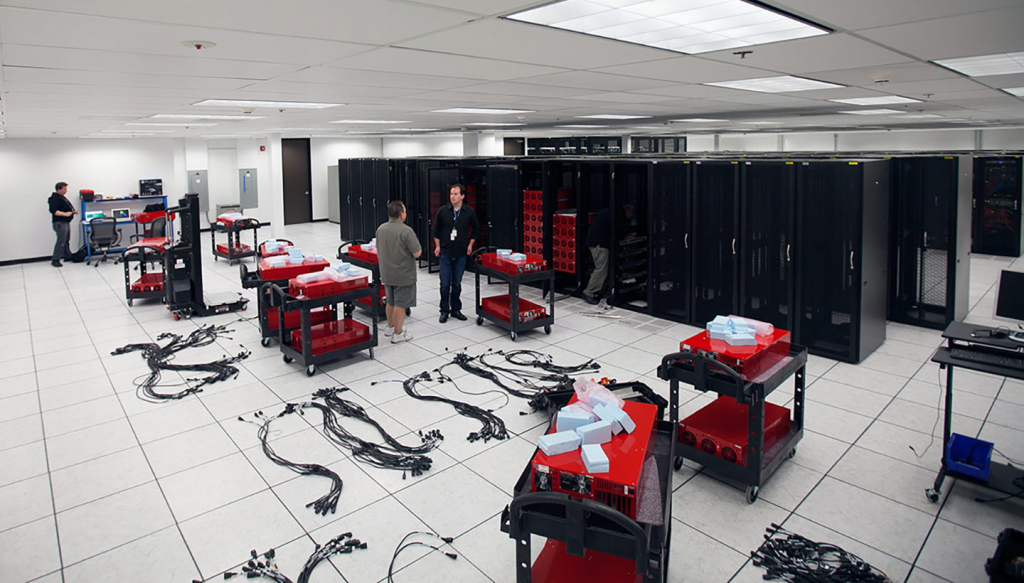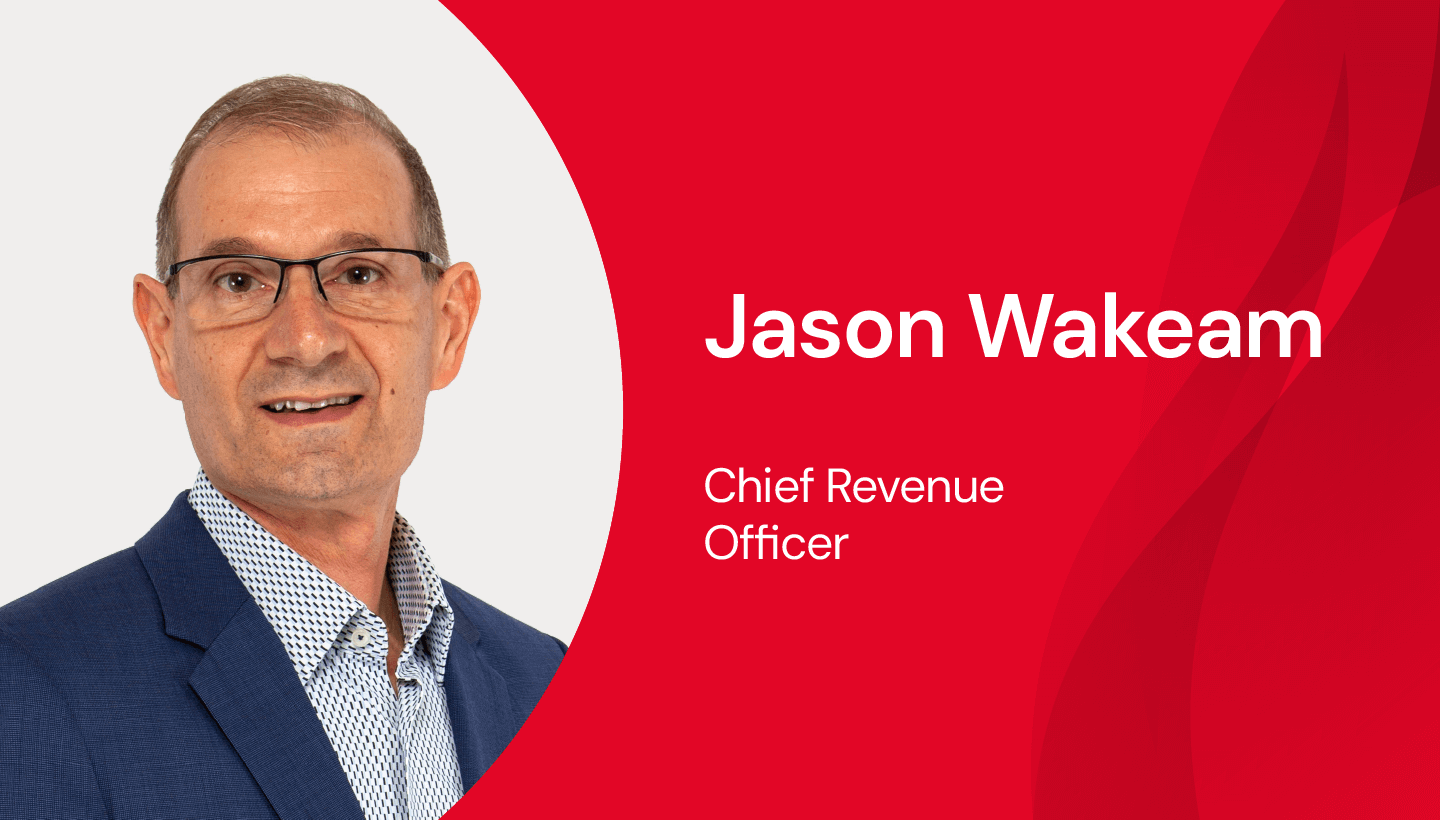This post by Backblaze’s CEO and Co-founder Gleb Budman is the first in a series about entrepreneurship. You can choose posts in the series from the list below:
- “How Backblaze Got Started: The Problem, the Solution, and the Stuff in Between”
- “Building a Competitive Moat: Turning Challenges Into Advantages”
- “From Idea to Launch: Getting Your First Customers”
- “How to Get Your First 1,000 Customers”
- “Surviving Your First Year”
- “How to Compete With Giants”
- “The Decision on Transparency”
- “Early Challenges: Managing Cash Flow”
- “Early Challenges: Making Critical Hires”
Backblaze will be celebrating its 10 year anniversary this month. As I was reflecting on our path to get here, I thought some of the issues we encountered along the way are universal to most startups. With that in mind, I’ll write a series of blog posts focused on the entrepreneurial journey. This post is the first and focuses on the birth of Backblaze. I hope you stick around and enjoy the Backblaze story along the way.
What’s Your Problem?
The entrepreneur builds things to solve problems—your own or someone else’s. That problem may be a lack of something that you wish existed or something broken you want to fix. Here’s the problem that kicked off Backblaze and how it got noticed:
Brian Wilson, now Co-founder and CTO of Backblaze, had been doing tech support for friends and family, as many of us did. One day he got a panicked call from one of those friends, Lise.
Lise: “You’ve got to help me! My computer crashed!”
Brian: “No problem—we’ll get you a new laptop; where’s your backup?”
Lise: “Look, what I don’t need now is a lecture! What I need is for you to get my data back!”
Brian was religious about backing up data and had been for years. He burned his data onto a CD and a DVD, diversifying the media types he used. During the process, Brian periodically read some files from each of the discs to test his backups. Finally, Brian put one disc in his closet and mailed another to his brother in New Mexico to have it off-site. Brian did this every week!
Brian was obviously a lot more obsessive than most of us.
Lise, however, had the opposite problem. She had no backup. And she wasn’t alone.
Whose Problem Is It?
A serious pain-point for one person may turn out to be a serious pain-point for millions.
At this point, it would have been easy just to say, “Well, that sucks” or blame Lise. “User error” and “they just don’t get it” are common refrains in tech. But blaming the user doesn’t solve the problem.
Brian started talking to people and asking, “Who doesn’t back up?” He also talked with me and some of the others that are now Backblaze co-founders, and we asked other people the same question.
It turned out that most people didn’t back up their computers. Lise wasn’t the anomaly; Brian was. And that was a problem.
Over the previous decade, everything had gone digital. Photos, movies, financials, taxes, everything. A single crashed hard drive could cause you to lose everything. And drives would indeed crash. Over time everything would be digital, and society as a whole would permanently lose vast amounts of information. Big problem.
Surveying the Landscape
There’s a well-known adage that “Having no competition may mean you have no market.” The corollary I’d add is that “Having competition doesn’t mean the market is full.”
Weren’t There Backup Solutions?
Yes. Plenty. In fact, we joked that we were 30 years too late to the problem.
“Solutions exist” does not mean “problem solved.” Even though many backup solutions were available, most people did not back up their data.
What Were the Current Solutions?
At first glance, it seemed clear we’d be competing with other backup services. But when I asked people “How do you back up your data today?” here were the answers I heard most frequently:
- Copy the My Documents directory to an external drive before going on vacation.
- Copy files to a USB key.
- Send important files to Gmail.
- Pray.
- And “Do I need to back up?” (I’ll talk about this one in another post.)
Sometimes people would mention a particular backup app or service, but this was rare.
What Was Wrong With the Current Solutions?
Existing backup systems had various issues. They would not back up all of a user’s data, for example. They would only back up periodically and thus didn’t have current data. Most solutions were not off-site, so fire, theft, or another catastrophe could still wipe out data. Some weren’t automatic, which left more room for neglect and user error.
In fairness, some backup products and services had already solved some of these issues. But few people used those products. I talked with a lot of people and asked, “Why don’t you use some backup software/service?”
The most common answer was, “I tried it…and it was too hard and too expensive.” We’d learn a lot more about what “hard” and “expensive” meant along the way.
Finding and Testing Solutions
Focus is critical for execution, but when brainstorming solutions, go broad.
We considered a variety of approaches to help people back up their files.
Peer to Peer Backup: This was the original idea. Two people would install our backup software which would send each person’s data to the other’s computer. This idea had a lot going for it: The data would be off-site; it would work with existing hardware; it was mildly viral.
Local Drive Backup: The backup software would send data to a USB hard drive. Manually copying files to an external drive was most people’s idea of backing up. However, no good software existed at the time to make this easy. (Time Machine for the Mac hadn’t launched yet.)
Backup to Online Services: Weirder and more unique, this idea stemmed from noticing that online services provided free storage: Flickr for photos; Google Docs for documents and spreadsheets; YouTube for movies; and so on. We considered writing software that would back up each file type to the service that supported it and back up the rest to Gmail.
Backup to Our Online Storage: We’d create a service that backed up data to the cloud. It may seem obvious now, but backing up to the cloud was just one of a variety of possibilities at the time. Also, initially, we didn’t mean “our” storage. We assumed we would use AWS or some other storage provider.
We put each solution we came up with through its paces. The goal was to come up with a solution that was easy: Easy for people to use. Easy to understand.
Peer to peer backup? First, we’d have to explain what it is (no small task) and then get buy-in from the user to host a backup on their machine. That meant having enough space on each computer, and both needed to be online at the same time. After our initial excitement with the idea, we came to the conclusion that there were too many opportunities for things to go wrong. Verdict: Not easy.
Backup software? Not off-site, and required the purchase of a hard drive. If the drive broke or wasn’t connected, no backup occurred. A useful solution but again, too many opportunities for things to go wrong. Verdict: Not easy.
Back up to online services? Users needed accounts at each, and none of the services supported all file types, so data would end up scattered all over the place. Verdict: Not easy.
Back up to our online storage? The backup would be current, kept off-site, and updated automatically. It would be easy for people to use, and easy to understand. Verdict: Easy!
Getting to the Solution
Don’t brainstorm forever. Problems don’t get solved on ideas alone.
We decided to back up to our online storage! It met many of the key goals. We started building.
Attempt #1:
We built a backup software installer, a way to pick files and folders to back up, and the underlying engine that copies the files to remote storage. We tried to make it comfortable by minimizing clicks and questions.
Fail #1:
This approach seemed easy enough to use—at least for us—but it turned out not to be for our target users.
We thought about the original answer we heard: “I tried it…and it was too hard and too expensive.”
“Too hard” is not enough information. What was too hard before? Were the icons too small? The text too long? A critical feature missing? Were there too many features to wade through? Or something else altogether?
We reached out to a lot of friends, family, and co-workers and held some low-key pizza and beer focus groups. Those folks walked us through their backup experience. While there were a lot of difficult areas, the most complicated part was setting up what would be backed up.
“I had to get all the files and folders on my computer organized; then I could set up the backup.”
That’s like cleaning the garage. Sounds like a good idea, but life conspires to get in the way, and it doesn’t happen.
We had to solve that or users would never think of our service as easy.
Takeaway: Dig deeper into users’ actual needs.
Attempt #2:
Trying to remove the need to “clean the garage,” we asked folks what they wanted to be backed up. They told us they wanted their photos, movies, music, documents, and everything important.
We listened and tried making it easier. We focused our second attempt at a backup solution by pre-selecting everything as important. We selected the documents folder and then went one step further by finding all the photo, movies, music, and other common file types on the computer. Now users didn’t have to select files and folders—we would do it for them!
Fail #2:
More pizza and beer user testing had people ask, “But how do I know that my photos are being backed up?”
We told them, “We’re searching your whole computer for photos.”
“But my photos are in this weird format: .jpg, are those included? .gif? .psd?”
We learned that the backup process felt nebulous to users since they wouldn’t know what exactly would be selected. Users would always feel uncomfortable—and uncomfortable isn’t easy.
Takeaway: No, really, keep digging deeper into users’ actual needs. Identify their real problem, not the solution they propose.
Attempt #3:
We took a step back and asked, “What do we know?”
We want all of our “important” files backed up, but it can be hard for us to identify what files those are. Having us guess makes us uncomfortable. So, forget the tech. What experience would be the right one?
Our answer was that the computer would just magically be backed up to the cloud.
Then one of our co-founders, Tim, wondered, “What if we didn’t ask any questions and just backed up everything?”
At first, we all looked at him askew. Back up everything? That was a lot of data. How would that be possible? But we came back to, “Is this the right answer? Yes. So let’s see if we can make it work.”
So we flipped the entire backup approach on its head.
We didn’t ask users, “What do you want to have backed up.” We asked, “What do you NOT want to be backed up?” If you didn’t know, we’d back up all your data. It took away the scary “pick your files” question and made people comfortable that all their necessary data was being backed up.
We ran that experience by users, and their surprised response was, “Really, that’s it?” Hallelujah.
Success.
Takeaway: Keep digging deeper. Don’t let the tech get in the way of understanding the real problem.
Pricing
Pricing isn’t a side note—it’s part of the product. Understand how customers will perceive your pricing.
We had developed a solution that was easy to use and easy to understand. But could we make it easy to afford? How much do we charge?
We would be storing a lot of data for each customer. The more data they needed to store, the more it would cost us. We planned to put the data on S3, which charged $0.15/GB/month. So it would seem logical to follow that same pricing model.
People had no idea how much data they had on their hard drive and certainly not how much of it needed to be backed up. Worse, they could be off by 1000x if they weren’t sure about the difference between megabytes and gigabytes, as some were.
We had to solve that too, or users would never think of our service as easy.
I asked everyone I could find: “If we were to provide you a service that would automatically back up all of the data on your computer over the internet, what would that be worth to you?”
What I heard back was a bell curve:
- A small number of people said, “$0. It should be free. Everything on the net is free!”
- A small number of people said, “$50-$100/month. That’s incredibly valuable!”
- But by far the majority said, “Hmm. If it were $5/month, that’d be a no-brainer.”
A few interesting takeaways:
- Everyone assumed it would be a monthly charge even though I didn’t ask, “What would you pay per month?”
- No one said, “I’d pay $X/GB/month,” so people thought of the value of the service rather than an amount of storage.
- There may have been opportunities to offer a free service and attempt to monetize it in other ways or to charge $50-$100/month/user, but these were the small markets.
- At $5/month, there was a significant slice of the population that was excited to use it.
Conclusion on the Solution
Over and over again we heard, “I tried backing up, but it was too hard and too expensive.”
After really understanding what was complicated, we finally got our real solution: An unlimited online backup service that would back up all your data automatically and charge just $5/month.
Easy to use, easy to understand, and easy to afford. Easy in the ways that mattered to the people using the service.
Often, looking backward, things seem obvious. But we learned a lot along the way:
- Having competition doesn’t mean the market is full. Just because solutions exist doesn’t mean the problem is solved.
- Don’t brainstorm forever. Problems don’t get solved on ideas alone. Brainstorm options, but don’t get stuck in the brainstorming phase.
- Dig deeper into users’ actual needs. Then keep digging. Don’t let your knowledge of tech get in the way of your understanding the user. And be willing to shift course as your learn more.
- Pricing isn’t a side note. It’s part of the product. Understand how customers will perceive your pricing.
Just because we knew the right solution didn’t mean that it was possible. I’ll talk about that, along with how to launch, getting early traction, and more, in future posts. What other questions do you have? Leave them in the comments.





